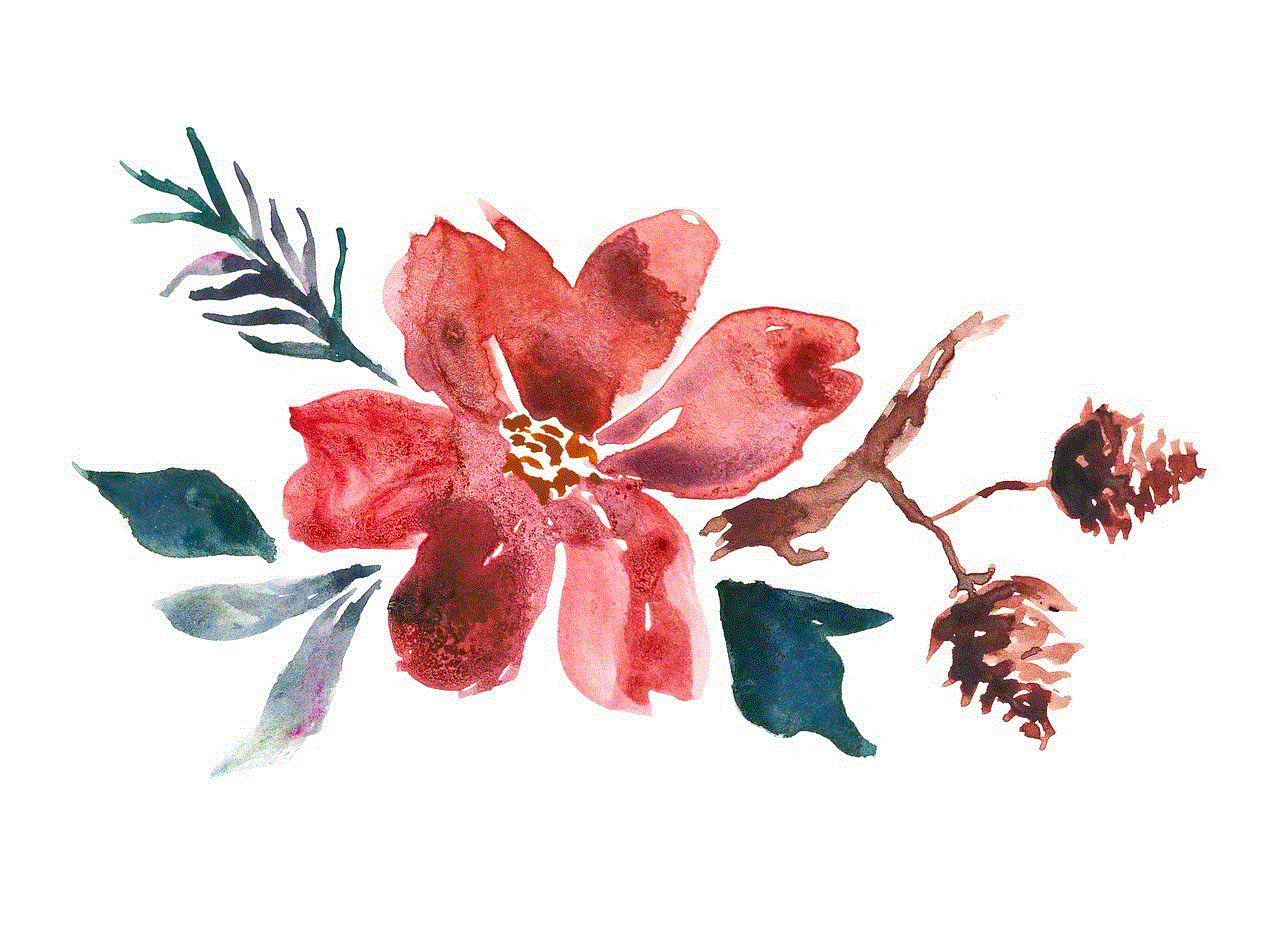how to find out if someone is on tinder
Tinder has become one of the most popular dating apps in recent years, with over 50 million users worldwide. It is known for its simple and user-friendly interface, making it easy for people to connect with potential matches in their area. With the rise of online dating, many people wonder how they can find out if someone is on Tinder. Whether you are curious about your partner’s activity on the app or want to see if a friend or acquaintance is using Tinder, there are a few ways to find out. In this article, we will discuss the different methods to find out if someone is on Tinder, as well as the potential consequences of snooping on someone’s dating life.
Method 1: Create a Tinder account
The most straightforward way to find out if someone is on Tinder is to create an account yourself. This method requires you to have a Facebook account, as Tinder uses Facebook to verify users. Once you have created a Tinder account, you can start swiping through potential matches in your area. If the person you are looking for is on Tinder, there is a good chance you will come across their profile. However, this method is not foolproof, as the person might have deleted their account or changed their name or age on their profile.
Method 2: Use a friend’s account
If you are not comfortable creating a Tinder account yourself, you can ask a friend to log in to their account and search for the person you are looking for. This method is more discreet and less time-consuming than creating your own account. However, it still requires you to know someone who is on Tinder and willing to help you out. Keep in mind that some people might find it intrusive to have someone else searching for them on a dating app, so make sure to respect their privacy and only use this method if you have their permission.
Method 3: Use a Tinder search website
There are several websites and apps that claim to help you find someone on Tinder by simply entering their name, age, and location. These websites use Tinder’s API (application programming interface) to gather information from the app’s database. While these websites might seem like an easy and convenient way to find out if someone is on Tinder, they are not always accurate. Tinder has strict privacy policies, and they do not allow third-party apps to access their data. Therefore, these search websites might not have the most up-to-date information, and their results should be taken with a grain of salt.
Method 4: Ask them directly
If you have a good relationship with the person you are looking for, the best and most honest approach is to ask them directly if they are on Tinder. This method might seem daunting, but it is the most respectful way to find out. If you have concerns about your partner’s activity on the app, it is always better to have an open and honest conversation about it. Avoid accusing them or jumping to conclusions without evidence. Keep in mind that even if they are on Tinder, it does not necessarily mean they are cheating or looking to cheat. Many people use Tinder for different reasons, such as making new friends or boosting their self-esteem.
Method 5: Observe their behavior
If you suspect someone is on Tinder, you can also observe their behavior for any signs. For example, if they are constantly on their phone, especially at odd hours, it might be a red flag. Another sign is if they are frequently receiving notifications from dating apps. However, keep in mind that these behaviors do not necessarily mean they are on Tinder. They could be using other dating apps or simply checking their social media accounts. Therefore, it is essential to have a conversation with them before jumping to conclusions.
Consequences of snooping on someone’s Tinder profile
While finding out if someone is on Tinder might satisfy your curiosity, it is essential to consider the consequences of snooping on someone’s dating life. Firstly, it is a breach of privacy, and the person might feel violated if they find out. Secondly, if you are in a committed relationship, snooping on your partner’s Tinder profile might lead to trust issues and damage the relationship. It is crucial to communicate openly and honestly with your partner instead of resorting to sneaky methods to find out if they are on Tinder.
Moreover, if you are using a friend’s or a third-party’s account to search for someone on Tinder, you are also violating their privacy. It is important to respect other people’s boundaries and ask for their consent before using their accounts for your own purposes.
Final thoughts
In conclusion, there are a few ways to find out if someone is on Tinder, such as creating an account, using a friend’s account, using a Tinder search website, asking them directly, and observing their behavior. However, it is essential to consider the consequences of snooping on someone’s Tinder profile, as it can lead to trust issues and damage relationships. If you have concerns about your partner’s activity on Tinder, it is always better to have an open and honest conversation with them. Communication is key in any relationship, and it is crucial to respect each other’s privacy.
no cap urban dictionary
The phrase “no cap” has become increasingly popular in recent years, especially within urban communities. While it may seem like a simple phrase, it holds a deeper meaning and has a rich history behind it. In this article, we will explore the origins of the term “no cap” and its evolution into the popular phrase it is today.
To understand the meaning of “no cap,” we must first look at its origins. The term can be traced back to the early 2000s in the Atlanta hip-hop scene. It was used by rappers to describe someone who was telling the truth or being honest. In this context, “cap” is short for “capping,” which means lying or exaggerating. So when someone said “no cap,” they were essentially saying “no lie” or “for real.” This usage of the term was also popularized by the Atlanta-based rap group, the Migos, in their 2016 hit song “Bad and Boujee.”



However, the phrase did not gain mainstream popularity until it was adopted by the younger generation in the mid-2010s. It spread through social media platforms like Twitter , Instagram , and tiktok -parental-control-effectively-in-2023″>TikTok , where it was used as a hashtag and included in captions and comments. As the phrase became more widespread, its meaning evolved to encompass a broader range of emotions and situations.
Today, “no cap” is used as a slang term to express a variety of sentiments, including agreement, emphasis, and sarcasm. It can also be used as a response to something shocking or unexpected. For example, if someone says, “I just won the lottery,” the response might be “no cap” to indicate that they are serious and not joking.
Another way “no cap” is used is to convey a sense of authenticity or realness. In a world where people are constantly curating their online persona, the phrase has become a way to differentiate between what is genuine and what is fabricated. When someone says “no cap,” they are assuring others that they are being honest and not trying to deceive anyone.
Additionally, “no cap” has also been used to express admiration or respect for someone. For instance, if a person is impressed by someone’s talent or skills, they might say “no cap” to indicate that they are not exaggerating their admiration. It has also been used to compliment someone’s appearance or outfit.
Furthermore, “no cap” has also been used to express support or solidarity. In the Black Lives Matter movement, for instance, it has been used as a way to show support for the cause and emphasize the seriousness of the issue at hand. It has also been used in the LGBTQ+ community to show support and acceptance for the community.
However, like any other slang term, “no cap” has also faced criticism and backlash. Some argue that it is overused and has lost its original meaning. Others claim that it promotes dishonesty and encourages people to hide their true feelings. There have also been debates about whether it is appropriate for people of all ages to use the phrase, given its origins in hip-hop culture.
Despite the criticism, “no cap” continues to be a popular phrase, especially among young people. Its versatility and ability to convey various emotions and sentiments have contributed to its widespread usage. It has also been included in popular songs, TV shows, and movies, further solidifying its place in popular culture.
Moreover, “no cap” has also inspired other variations of the phrase, such as “capped,” “cap on,” and “cap off.” These variations are often used in the same context as “no cap” and have become a part of the ever-evolving urban slang.
In addition to its use in spoken language, “no cap” has also made its way into the fashion world. It can be found on clothing items like t-shirts, hats, and accessories, further solidifying its place in popular culture. Brands and influencers have also used the phrase in their marketing campaigns, making it even more mainstream.
In conclusion, “no cap” has come a long way from its origins in the Atlanta rap scene. It has evolved into a versatile phrase used to express various emotions and sentiments. Its widespread usage in popular culture, both online and offline, has solidified its place in modern slang. While it may face criticism, there is no denying the impact “no cap” has had on language and culture. It will be interesting to see how the phrase continues to evolve and adapt in the future. No cap.



thirsty urban dictionary
Thirsty, according to the Merriam-Webster dictionary, is defined as “feeling a need to drink.” However, in today’s society, the word has taken on a whole new meaning. In the world of social media and pop culture, being “thirsty” has become a widely used term to describe someone who is overly eager or desperate for attention, validation, or affection. This term has become so popular that it has even made its way into the Urban Dictionary, a slang dictionary that defines modern words and phrases. So, what exactly does it mean to be “thirsty” in the context of the Urban Dictionary? Let’s dive deeper into this term and explore its origins, usage, and impact on society.
First and foremost, the term “thirsty” has been used in the African American community for decades. It originated in the 1990s and was commonly used by rappers and hip-hop artists to describe someone who was desperate for fame or attention. It was often used in a derogatory manner, implying that the person was willing to do anything to get noticed, even if it meant sacrificing their dignity. Over time, the term became more widespread and was used to describe anyone who displayed similar behaviors, regardless of their race or background.
Fast forward to the 2010s, and the term “thirsty” exploded in popularity with the rise of social media. With platforms like Instagram, Twitter, and TikTok, people had more ways to showcase their lives and gain attention from others. This led to a surge of “thirsty” behavior, with individuals going to extreme lengths to gain followers, likes, and comments. This could include posting revealing photos, constantly seeking validation through compliments, or even publicly professing their love for someone they barely know.
In the Urban Dictionary, the term “thirsty” is defined as “too eager to get something, especially attention or affection.” It goes on to explain that someone who is “thirsty” is “desperate or overly eager for attention, approval, or excitement, especially in a way that is obvious or annoying.” This definition perfectly captures the essence of being “thirsty” and how it is perceived in today’s society.
One of the main reasons why the term “thirsty” has gained so much traction is because of its relatability. In a world where social media has become a significant part of our lives, it’s hard not to fall into the trap of seeking validation from others. We are bombarded with images of people living seemingly perfect lives, and it’s easy to compare ourselves and feel inadequate. As a result, many people resort to “thirsty” behavior to gain attention and feel validated.
However, being “thirsty” is not always seen in a negative light. In some cases, it can be used to describe someone who is confident and unapologetically themselves. This can include someone who is not afraid to express their feelings, chase their dreams, or stand up for what they believe in. In this context, being “thirsty” can be seen as a positive trait, and it’s a way for people to reclaim the term and use it in a more empowering manner.
On the other hand, there are also instances where the term “thirsty” is used to shame and belittle women. In today’s society, women are often judged and criticized for expressing their sexuality or being confident in their appearance. This has led to the term “thirsty” being used to slut-shame or degrade women who are simply embracing their femininity. It’s a double standard that perpetuates the idea that women should be modest and reserved, while men can openly express their desires and sexuality without being judged.
Moreover, the term “thirsty” has also become a way for people to police and control others. It’s often used to shame someone for being too “needy” or “clingy” in a relationship, regardless of whether their behavior is justified or not. This can be damaging to individuals who may struggle with insecurity or attachment issues, making them feel even more inadequate and unworthy of love. It’s a toxic dynamic that can lead to unhealthy relationships and a distorted perception of what it means to be “thirsty.”
Another aspect of being “thirsty” that is worth exploring is its impact on mental health. As mentioned earlier, seeking validation and attention from others can be a result of low self-esteem and a need for external validation. This can have a significant impact on one’s mental well-being, leading to feelings of inadequacy, anxiety, and depression. In extreme cases, it can also lead to obsessive and addictive behaviors, as individuals become more fixated on gaining attention and approval from others.



Furthermore, the term “thirsty” has also seeped into popular culture, with many celebrities and influencers being labeled as such. This has led to a culture of “canceling” and shaming individuals for displaying “thirsty” behavior. While it’s important to call out problematic behavior, this trend has also created a toxic environment where people are afraid to be themselves and express their desires openly. It’s a vicious cycle that perpetuates the idea that being “thirsty” is something to be ashamed of.
In conclusion, the term “thirsty” has evolved from its origins in the African American community to a widely used term in modern society. It’s a word that carries a lot of weight and can have both positive and negative connotations. While it’s often used to describe someone who is overly eager or desperate for attention, it’s essential to recognize that there are underlying factors that contribute to this behavior. Instead of shaming and ridiculing individuals for being “thirsty,” we should strive to create a more inclusive and accepting society where people feel comfortable being themselves without fear of judgment.
0 Comments